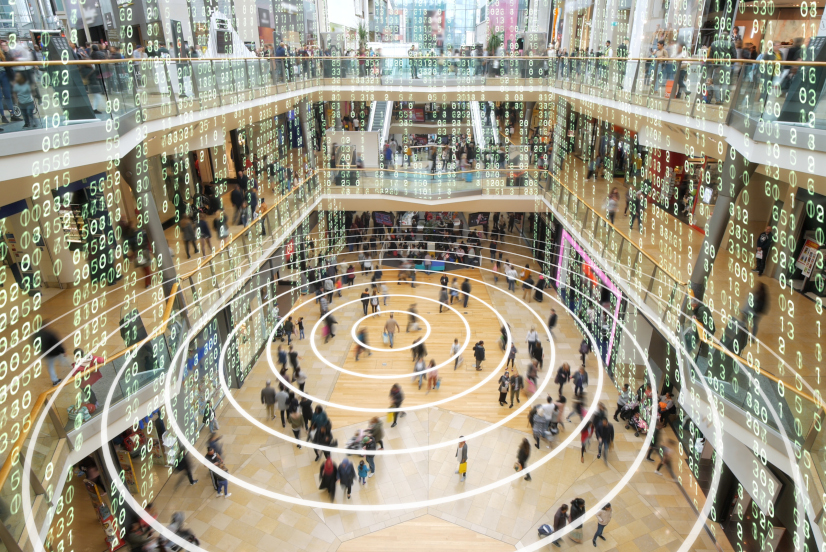The retail shopfitting industry has faced a series of unprecedented challenges in recent years. With coronavirus restrictions forcing most retail outlets to close, the knock-on effects for shop fitting businesses have been especially tough. There have also been longer standing issues – be that the decline of the high street or the impacts of political changes such as Brexit.
Nevertheless, there are glimmers of hope for shopfitting suppliers going forward, with the retail industry opening up and sales rebounding. Whether you are a new shopfitting business or are looking to keep an established company abreast with key developments, the following shopfitting trends can help you plan for the future.

What is shopfitting?
Retail shopfitting is about designing retail stores so that they deliver a positive customer experience. Shopfitters can also be called in for fit-outs of establishments such as cafes, post offices, restaurants, pubs and leisure centres. Shopfitting is about more than just laying out shelves, lighting and points of sale – although this is of course essential. It also considers brand messaging and consumer psychology.
Shopfitting suppliers typically work hand in hand with a retail brand’s in-house designer or third-party architects. They draw on their experience and expertise to contribute solutions and further enhance the project. Depending on the size of the shop fitting contractor and the sorts of customers they work with, shopfitters may offer end-to-end services (initial consulting, design and installation), or they may work as subcontractors, providing specific services such as shopfitting lighting, carpentry or electronics.
Keep learning: 7 kinds of software for fit out companies
3 trends in retail shopfitting
Retailers are, of course, the primary customers of shopfitting businesses, and this industry is facing a number of challenges today. Ensuring that your shopfitting company understands these trends and can meet customer needs will be essential going forward.
Here are some of the key contemporary trends in shopfitting – and what they mean for you.
1. Experiential shopping
Most shoppers today could, in theory, buy almost every product they could ever need online. As a result, traditional bricks and mortar shops need to differentiate themselves from online competitors. Providing experiences in-store is one of the key ways they can do this.
What this means for shopfitting businesses: Essentially, shopfitting is no longer just about installing shelves and lighting and electrical points. You will need to develop skills installing new kinds of equipment and technology. This can include lighting rigs, stages, art installations and so on. In many ways, this is positive, allowing you to be more creative. That said, it will require new skills and expertise.
Example: To provide its customers with a unique experience, a high street footwear chain decides to hold frequent DJ sets. To accommodate this change, they need a shopfitting supplier to support them with building stages and lighting which is attractive, while still allowing people to easily try and buy shoes.
2. Green retail
Climate change is on shoppers’ minds more than ever before, and major retail chains are well aware that consumers consider a brand’s green credentials when deciding to buy with them. Retail outlets are the primary place that many consumers interact with brands. Therefore, stores are looking to make their shops feel more environmentally friendly.
What this means for retail shopfitters: In the coming years, you can expect to work on more projects with brands that are hoping to use eco-friendly materials, lighting, or flooring. You might also need to install new air conditioning systems, facades or even bicycle parking stations, depending on the design.
Example: A chain of organic supermarkets wants to ensure that all materials used in its new stores are made from recycled or upcycled materials. This means that you will need to develop relationships with shopfitting suppliers who can provide this kind of hardware.
3. Technology everywhere
Technology is more deeply ingrained with the retail experience than ever before. It is now normal for shops to have LCD displays, Wi-Fi and touchscreen units to order products in-store. Many stores are going much further with things like Internet of Things sensors, variable mood lighting, high tech window displays and more.
What this means for retail shopfitters: Fundamentally, it is going to be essential to learn about the various types of technology being used in the retail industry and learn how it is installed and integrated within the confines of each shop.
Example: A furniture department store discovers that people are more likely to make purchases at different times of day depending on lighting. They choose to utilise a more sophisticated lighting system that will adapt depending on the natural light levels outside. Shopfitting lighting experts need to get to grips with the underlying technology and psychology involved in modern lighting systems.
Recommended: What makes a great commercial fit-out?
Manage retail shopfitting projects better
As the trends highlighted above demonstrate, shopfitting businesses need to continually adapt to changing circumstances to ensure that they continue to meet the changing needs of customers. While the fundamental skills of shopfitting suppliers remind as important as ever, keeping up with these trends means that your company will be able to win more business.
Another way to ensure your shopfitting operations are as productive and efficient as possible is to use project management technology like PlanRadar. PlanRadar allows shopfitting businesses to view the plans for all the stores they are working on, share this with workers (you can view interactive blueprints on a mobile app) allocate tasks and monitor project progress. With PlanRadar, it becomes much easier to manage multiple jobs, save time and get more work completed.
Learn more about how PlanRadar helps shopfitting businesses like yours, or get in touch for a demo.


